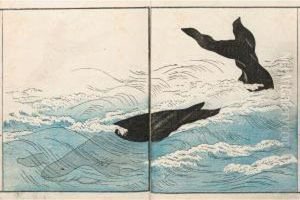Kitao Masayoshi Paintings
Kitao Masayoshi was a Japanese ukiyo-e artist and book illustrator active during the Edo period. He was born in 1764 in Edo (modern-day Tokyo), Japan. Masayoshi was originally named Kitao Santo, and he initially trained under the book illustrator Kitao Shigemasa. Over time, he became a skilled artist, known for his bijinga (pictures of beautiful women) as well as for his illustrations of warriors and historical figures.
Masayoshi's career spanned a period of significant change in Japanese art, with the transition from the Kansei era to the Bunka and Bunsei eras of the late Edo period. He was not only an artist but also a writer on art theory, and he adopted the go (art name) Kuwagata Keisai later in his career. His style evolved over the years, showing influences from Western art, which were becoming more prevalent in Japan at the time, as well as from traditional Japanese techniques.
One of Masayoshi's significant contributions to ukiyo-e art was his development of the 'sōsaku hanga' (creative print) movement, which emphasized the artist's involvement in all stages of printmaking, a departure from the traditional division of labor in the production of ukiyo-e. Despite this, he remained deeply engaged with the collaborative nature of Japanese printmaking, working with publishers, engravers, and printers to produce his work.
Masayoshi was prolific, and his extensive work included the series 'Manga' (sketchbooks), which contained a variety of subjects, from figures and landscapes to supernatural creatures, showcasing his versatility and imagination. These sketchbooks were influential in the development of later manga, the Japanese comic book tradition.
Kitao Masayoshi's legacy is that of a transitional figure in Japanese art, bridging traditional ukiyo-e with the new influences of the West, as well as paving the way for future developments in Japanese visual culture. He passed away in 1824, leaving behind a rich body of work that continues to be studied and appreciated for its artistic merit and historical significance.
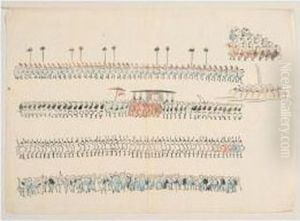
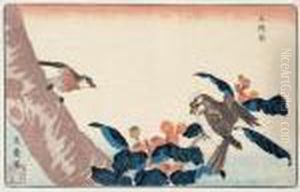
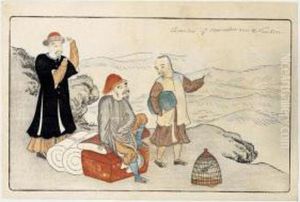
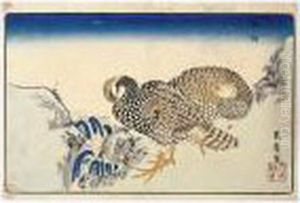
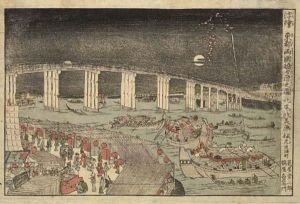
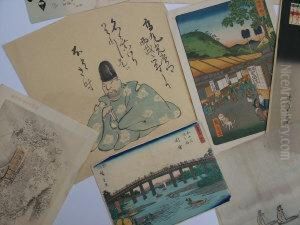
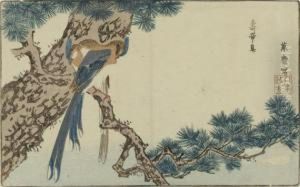
![Sansui Ryakuga Shiki [landscapes In The Cursive Picture Style]](https://www.niceartgallery.com/imgs/802585/s/kitao-masayoshi-sansui-ryakuga-shiki-landscapes-in-the-cursive-picture-style-6aaac654.jpg)
